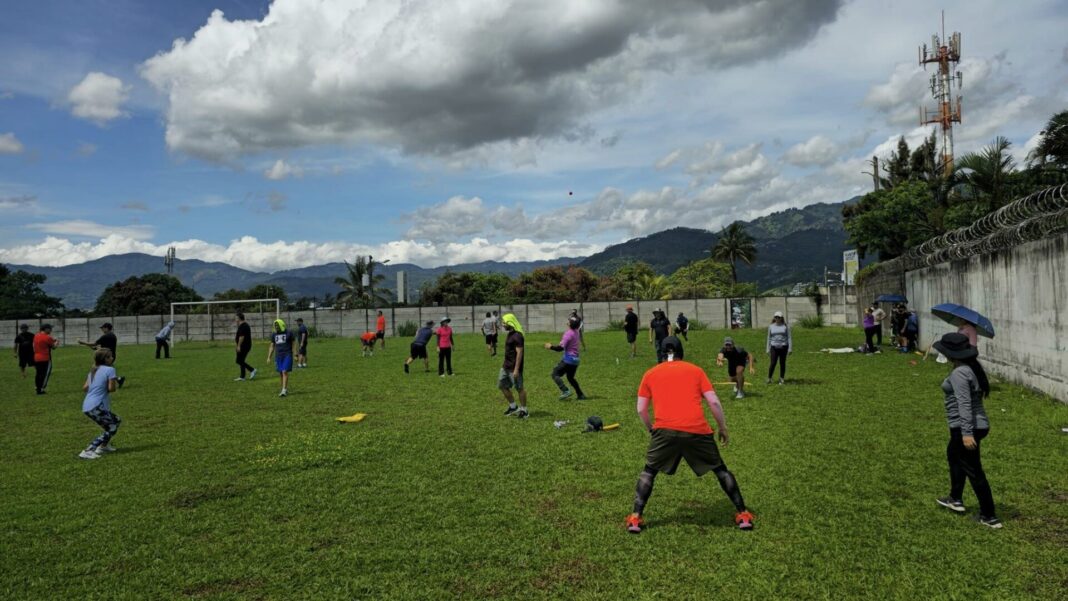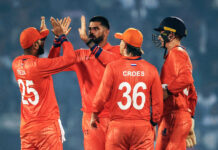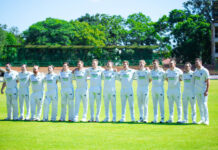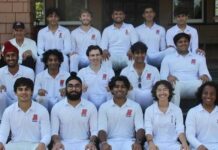Rugged mountains, towering volcanoes, lush rainforest and steaming tropical plains; Costa Rica has it all.
In fact, this stunning biodiverse nation in the Central American region contains 5% of the planet’s wildlife, despite its diminutive size. It also punches regularly above its weight, scoring highly on a wide range of measures related to democratic governance, press freedom and sustainability.
Not bad for a country of five million people.

And as the Federación de Cricket de Costa Rica President, Sam Arthur tells Emerging Cricket, it is this same positive, aspirational attitude that makes the local cricket scene tick. And has helped them win the regional ‘100% Cricket Female Cricket Initiative of the Year’ award from the International Cricket Council (ICC) last year.
Women’s Cricket and ICC Award
Costa Rica’s journey with women’s cricket started in 2013.
“My predecessor had a workshop for girls, he brought a female coach to train them and help kickstart women’s cricket,” Arthur states.
“When I took over in 2016, this was one of my biggest focus areas. Costa Rica is a very open society, women have the same rights as men, but when it comes to cricket playing numbers, there was a big imbalance.”
With an eye on reducing this participation gap, he organised another three-day training camp.
“We invited Anne Browne-John from West Indies. She’s a former captain and was the team operations manager for the T20 World Cup-winning women’s team in 2016.”
“We had 27 teachers participate in the camp, who then went back and started teaching their students. As a result, our women’s league has grown to five teams now, which is a big upgrade from what it used to be,” he says.
In 2023, the cricket federation ran the ‘Mothers and Daughters’ cricket programme alongside the National Women’s Institute. A targeted initiative to promote physical activity and celebrate women’s cricket in a safe environment, the event was a roaring success. It garnered the sport some much needed publicity back home and also won them the ICC development award.
Sam Arthur’s cricketing journey
The conversation then turns to Arthur’s own cricketing journey.
“It’s a really funny story. I am Indian, my wife is Costa Rican so after we got married in India we decided to move there.”
“Normally, it takes a while for the paperwork to be done to be able to get a job there. And I hadn’t yet received my citizenship, so I was looking around for temporary jobs. I managed to secure an interview with a company, which strangely enough was being held at a city bar, even though I was not interviewing for the bartender role,” he laughs.
As he was leaving the bar after the interview, Arthur got approached by an English patron.
“He asked me if I was Indian. I said ‘Yes, I was Indian’.
“‘Do you play cricket?’ ‘Yes, I used to play cricket when I was in India’.
“Then he asked me, ‘Would you like to play cricket?’”
The offer shocked Arthur. “I had no idea that cricket is played here. I told him, ‘Of course, I would love to play.”
“The only problem was that I had no cricket gear, having left everything behind in India. So, I literally turned up wearing jeans and a white t-shirt at my first game,” he chuckles.
Regardless, he had a blast, picking up three wickets with the ball. “I was really happy; thought I had given up cricket for good.”

Afterwards, Richard Illingworth, the then President of the Costa Rica Cricket Association got in touch, offering Arthur a part-time job as a development officer.
“We had a long discussion. He knew I was looking for a job and wanted to offer me something while I was on the hunt for proper full-time work.”
Arthur eventually got a job in IT with Cisco, but still carried on with his development work.
“I would go to different schools around the country every other week, to try and get the local kids there to play some cricket.”
After three years, he became the national development officer: “We had around 15 schools participating in the youth tournament, using semi-hard balls. By 2017, this had grown to 60 schools after we did some cricketing workshops with PE teachers at public schools,” he says.
Arthur also went on to represent the national team, turning out for the country in multiple 20 and 50-over fixtures, including three T20Is with official status. He ascended to the role of President in 2016, still dividing his hours between full-time IT work and his cricketing responsibilities. That is, until last year, when he quit his IT job to focus full-time on cricket administration.
History of Cricket in Costa Rica
Cricket has a long and fascinating history in Costa Rica, despite the country being a former colony of Spain. The sport was introduced in the 1870s by Jamaicans who went to work there at the railroads and banana plantations.
“I heard Richard saying that in 1938, there used to be about 45 teams on the Caribbean coast playing cricket,” states Arthur.
One of West Indian cricket’s all-time greats, George Headley, was a regular visitor. Unfortunately, this changed drastically after WWII when banana imports were prohibited in Britain. This subsequently reduced travel between Jamaica and Costa Rica and the availability of cricket gear became a major issue. The descendants slowly moved away from cricket and went into playing baseball and basketball instead, which ultimately caused the game’s decline.
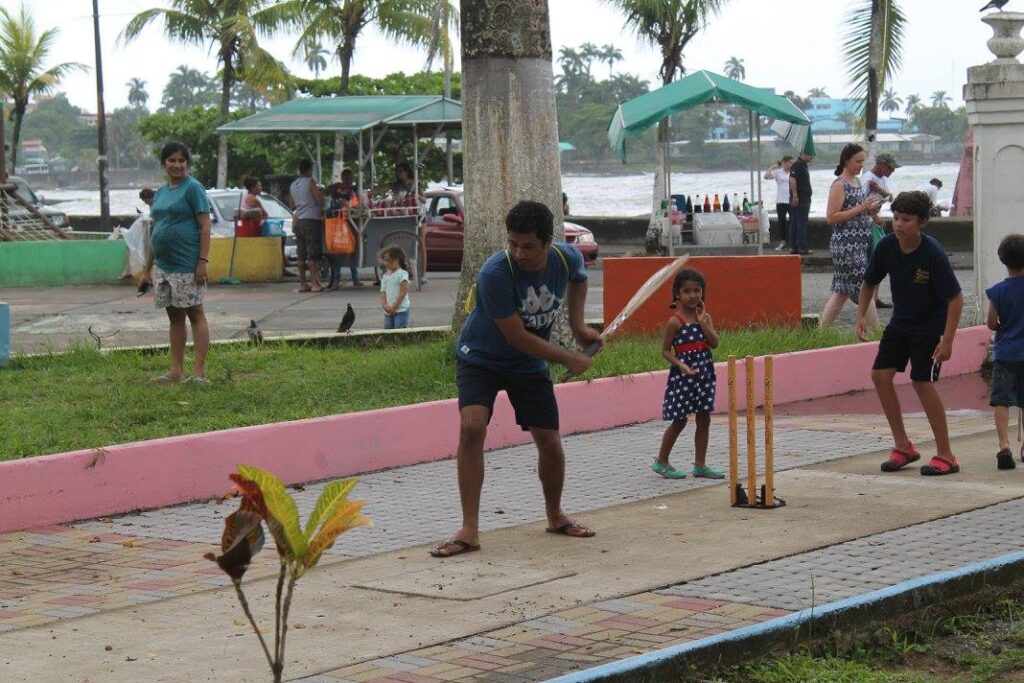
Then in the 1970s, it received a second spurt of life through British migrants who started playing cricket and reintroduced the game on the Caribbean coast and in the capital.
The Current Scene
Since then, growing the game has been a slow, tedious process but Arthur insists they are making progress.
“Last year, we reported 1,600 cricket participants nationally. That number has grown this year. Where we used to have only three men’s teams, we now have eight teams divided into two national leagues.”
As the three San José based clubs are dominated by expats, the President started a fourth club to provide locals with more playing opportunities in the top division.
“Obviously, the quality of game is different. We keep getting smashed by the other three teams in the city, but the goal is to teach the locals how to play cricket and have fun doing so,” he chuckles.
The second division is similarly made up of another four teams, comprised exclusively of native Costa Ricans.
“It’s easy for them to play with others at the same skill level. We don’t bother emphasising the fielding positions to make the game as simple as possible to understand. Generally, I draw diagrams and direct people where to go to field,” Arthur states
“The language barrier is difficult, but it has not stopped us from advancing. Once they get to a higher level, then only we expect them to know a few specific cricket terms.”
Additionally, there is a cricket schools’ program which runs from July to November, as well as U13 and U19 leagues. The playing season runs from December to mid-May, winding up before the torrential rains start lashing the verdant rainforest cloaked mountainsides and valleys. The cricketers also make do with rudimentary facilities and infrastructure. There are no proper cricket grounds or even a turf pitch.
“We are working on it. We have had several meetings with various stakeholders,” says Arthur.
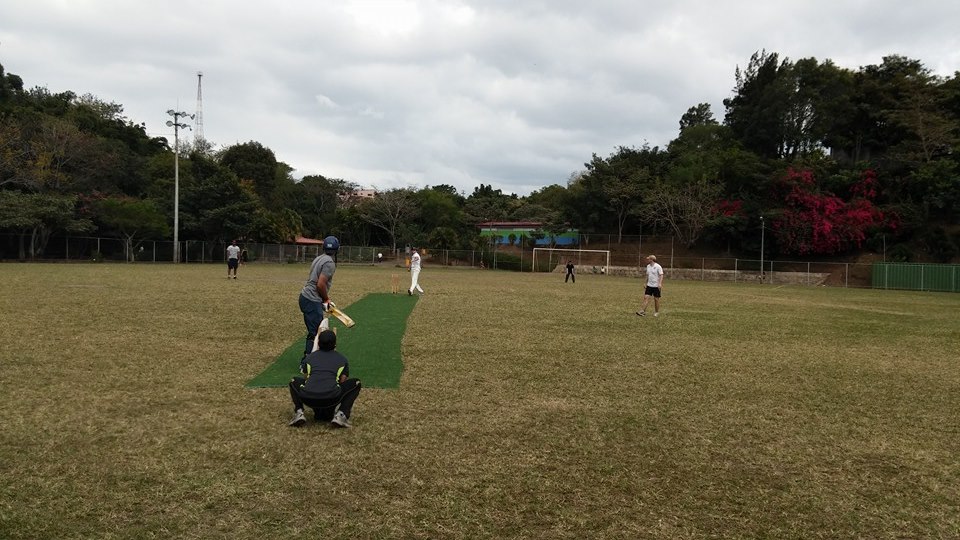
Currently, the national league cricketers all convene at a polo club ground, a 40-minute drive away from San José. It’s also where the national team practices and plays their matches.
“Apart from that we have other small football fields and baseball grounds, although these facilities need to be rented,” Arthur continues.
“Depending on the condition of the ground, we either use coconut matting or a Flix pitch. We bought the coconut matting recently and it cost us $1,200 dollars. It’s not cheap.”
Partnership with local sports committees
Despite all the infrastructure challenges, the Federation has come up with a unique method to grow the game nationwide. It involves partnering with local sports committees to spread awareness of the game and try to introduce it to the schools in that region. Although, selling the concept can be easier said than done.
“Generally, when we approach the local sporting committee directors, some of them get confused between croquet, polo and cricket. They think that we use a mallet and hoops or a horse to play cricket! So, I tell them it is similar to baseball which usually gets the message through,” Arthur chuckles.
The strategy has proved quite successful. With the help of these sports committees, the federation has been able to field eighteen under-19 teams, including six girl’s teams in hardball cricket. This year, cricket has also been included in the National Games which is a big step for increasing the sport’s mainstream credibility.
What’s helped further is cricket’s inclusion into the Olympics. Arthur says that as a voting member of national Olympic committee, the Federation collaborates with the committee with regards to organisation of small events.
“This year, they provided valuable help to us with the Central American Championships, things like ground rental, lunches and the trophies etc.”
Due to cost constraints, the championship event ultimately ended up being a bilateral T20I series between Mexico and Costa Rica, which Mexico won 3-2.
Funding and competition with other sports
As a small Associate member, one of the Federation’s major constraints is the limited pool of funding. While its largely a volunteer run organisation, the Federation still pays some expenses for volunteers to encourage them to return.
“We do get some funding from the ICC as well as our national sports authority. The authority wants to ensure that we employ an administrative officer, which we already do. If you go on our social media like Facebook, Instagram or X, it’s always updated. We are blessed to have a sports administrator who also takes care of media management,” says Arthur.
As for competition with other sports, the President mentions that Football, Surfing, Cycling and Basketball are the most popular in Costa Rica. Other emerging sports like Rugby and Baseball are also further ahead in terms of fan following and funding.
“Rugby used to be at our level, but they have advanced a lot. Every time there is a Rugby World Cup, their resources keep increasing. We need to work hard to improve our scorecard measures and demand more funding for cricket,” he opines.
“Our latest census results paint an encouraging sign of participation growth; this should have a positive impact on our ICC funding next year.”
Future Goals
Lastly, the conversation turns to the future goals of the federation. Arthur is adamant that he’s not solely focused on growing cricket in Costa Rica. Instead, he has bolder plans for the game in the wider Central and South Americas region.
“My ultimate goal is to develop and grow cricket in the entire region. If you look at cricket around the world, the Americas have a very thin membership base in comparison, with only 16 Associate members and one Full Member in the West Indies.
“We need to collaborate more with other members and organise more tournaments. Of course, the limited funding is a major barrier. But we are trying to see if we can secure some funds through sponsors and focus on diversifying our income streams.”
Arthur also wants ICC to reinstate the ICC Americas Championship tournaments for non-Test nations. This was binned in 2014, largely due to sharp cuts in the Associate development budget as a result of the infamous “Big 3” takeover of the global governing body.
“Costa Rica finally played an official T20I this year after a gap of 5 years, our last international competition was in 2019. We also played last year, but it wasn’t counted as an official match due to some of our players not meeting eligibility requirements. So, one of my priorities has been to field a fully eligible team because win or lose, it will still put us back on the T20I rankings ladder,” says Arthur.
He also remains optimistic about entering the national men’s team into the qualification pathway event for the 2026 T20 World Cup.
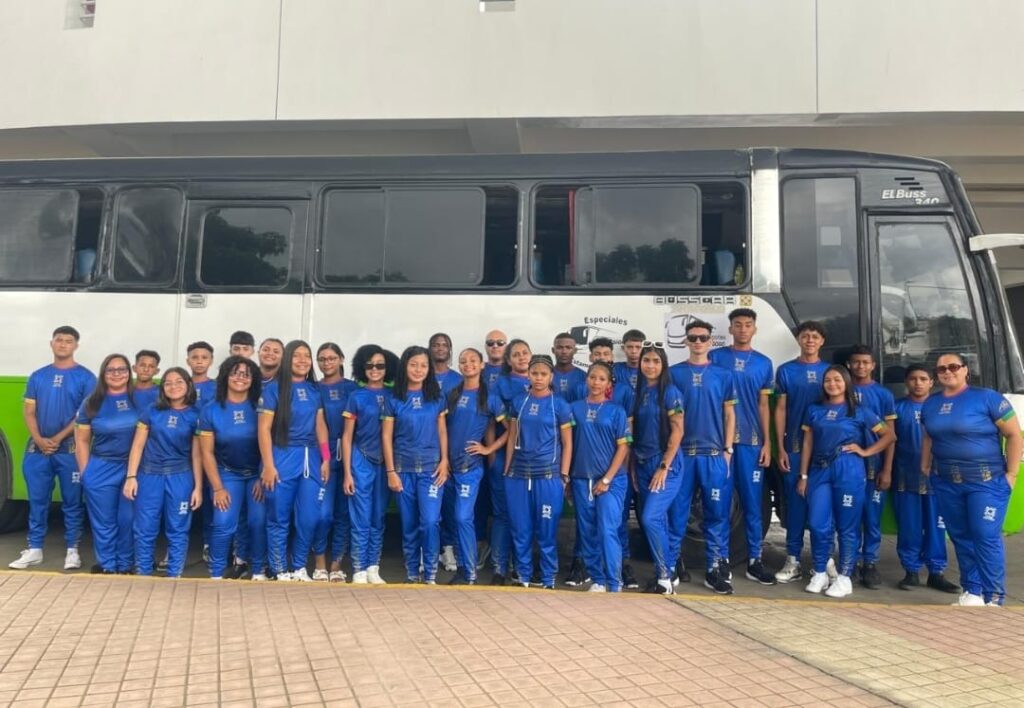
As for women’s cricket, Arthur cites Brazil as an inspiration and an example to emulate.
“Matt Featherstone (Cricket Brasil Development Director) is a very good friend of mine. We are in constant communication, always sharing ideas.
“Obviously, they are way ahead of us in terms of competition and scorecard ranking. They have done a tremendous job, of which they are reaping the fruits now. We are already talking to the National Sports Authority and the Olympic Committee to see if there is a chance we can financially support the players, particularly the girls.”
“I believe they need some sort of incentive right, because for them cricket is not a passion. For me it was a passion, I come from a country that worships cricket. So, the main challenge is to harness their involvement in cricket and convert that into passion for the game.”
You’re reading Emerging Cricket — brought to you by a passionate group of volunteers with a vision for cricket to be a truly global sport, and a mission to inspire passion to grow the game.
Be sure to check out our homepage for all the latest news, please subscribe for regular updates, and follow EC on Twitter, Facebook, LinkedIn and YouTube.
Don’t know where to start? Check out our features list, country profiles, and subscribe to our podcast. Support us from US$2 a month — and get exclusive benefits, by becoming an EC Patron.

